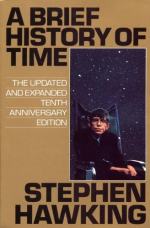|
This section contains 461 words (approx. 2 pages at 400 words per page) |

|
Chapter 6 Black Holes Summary and Analysis
A black hole is the result of a large star using up all of its hydrogen fuel and collapsing inward from the huge force of gravity. The gravity force is so strong that nothing can escape, including light. The point at which nothing can escape the gravity is called the event horizon. Conversely, anything passing the event horizon becomes sucked into the black hole and is torn apart by the strong gravity.
Central to the idea of a black hole is the theory of light. Newtonian theory proposes that light is made of particles, and quantum mechanics verifies that light is truly a particle, but also behaves as a wave. In fact all matter particles behave like waves. This is important because gravity only acts upon matter particles, of which light is made up—photons.
Not...
(read more from the Chapter 6 Black Holes Summary)
|
This section contains 461 words (approx. 2 pages at 400 words per page) |

|




